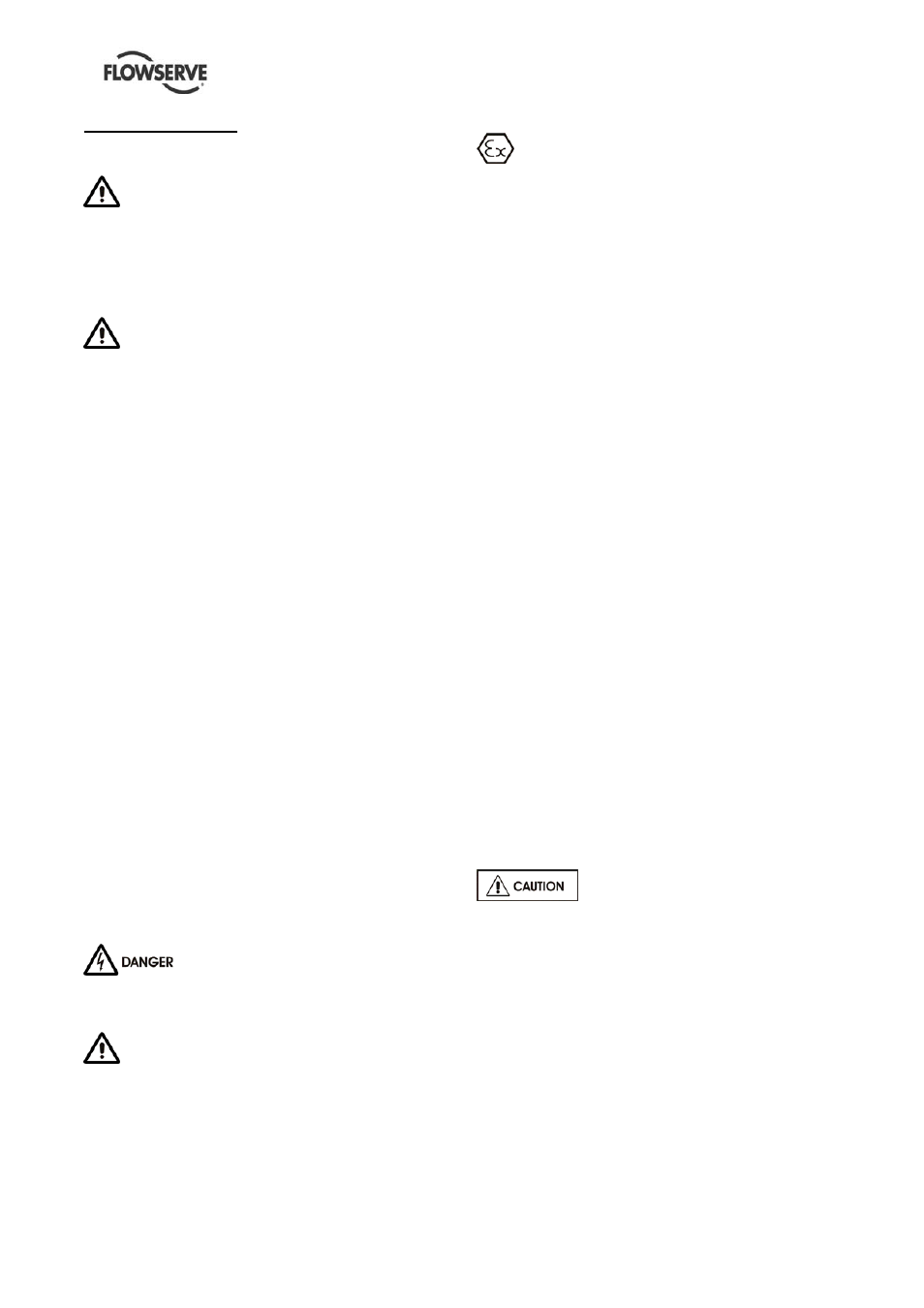Flowserve LPNV Worthington User Manual
Page 30

LPNV USER INSTRUCTIONS ENGLISH 87900031 – 06/14
Page 30 of 48
6 MAINTENANCE
6.1 General
It is the plant operator's responsibility to
ensure that all maintenance, inspection and
assembly work is carried out by authorized and
qualified personnel who have adequately
familiarized themselves with the subject matter by
studying this manual in detail. (See also section 1.6)
Oil and grease leaks may make the ground
slippery. Machine maintenance must always
begin and finish by cleaning the ground and the
exterior of the machine.
If platforms, stairs and guard rails are required for
maintenance, they must be placed for easy access
to areas where maintenance and inspection are to
be carried out. The positioning of these accessories
must not limit access or hinder the lifting of the part
to be serviced.
When air or compressed inert gas is used in the
maintenance process, the operator and anyone in
the vicinity must be careful and have the appropriate
protection.
Do not spray air or compressed inert gas on skin.
Do not direct an air or gas jet towards other people.
Never use air or compressed inert gas to clean
clothes.
Before working on the pump, take measures to
prevent an uncontrolled start. Put a warning board
on the starting device with the words: "Machine
under repair: do not start".
With electric drive equipment, lock the main switch
open and withdraw any fuses. Put a warning board
on the fuse box or main switch with the words:
"Machine under repair: do not connect".
Before attempting any inspection or
repair on the pump, the driver controls must be in
the "off" position, locked and tagged to prevent injury
to personnel performing service on the pump.
Before attempting to disassemble pump, pump
must be isolated from system, by closing suction and
discharge system valves, drained of liquid and
cooled, if pump is handling hot liquid.
Never clean equipment with inflammable solvents or
carbon tetrachloride. Protect yourself against toxic
fumes when using cleaning agents
.
6.2 Maintenance schedule
It is recommended that a maintenance plan
and schedule is adopted, in line with these User
Instructions, to include the following:
a) Any auxiliary systems installed must be
monitored, if necessary, to ensure they function
correctly.
b) Gland seal must be adjusted correctly to give
visible leakage and concentric alignment of the
gland follower to prevent excessive temperature
of the packing or follower
.
c) Check for any leaks from gaskets and seals.
The correct functioning of the shaft seal must be
checked regularly.
d) Check bearing lubricant level, and if the hours
run show a lubricant change is required.
e) Check that the duty condition is in the safe
operating range for the pump.
f) Check vibration, noise level and surface
temperature at the bearings to confirm
satisfactory operation.
g) Check dirt and dust is removed from areas
around close clearances, bearing housings and
motors.
h) Check coupling alignment and re-align if
necessary.
FLOWSERVE specialist service personnel can help
with preventative maintenance records and provide
condition monitoring for temperature and vibration to
identify the onset of potential problems.
If any problems are found the following sequence of
actions should take place:
a) Refer to section 7, Faults; causes and remedies,
for fault diagnosis.
b)
Ensure equipment complies with the
recommendations in this manual.
c) Contact Flowserve if the problem persists.
6.2.1 Routine inspection (daily/weekly)
The following checks should be made
and the appropriate action taken to remedy any
deviations:
a) Check suction and discharge gauges.
b) Check for abnormal operating conditions
(High/Low Temperature, Flows, Vibration,
Pressures Etc.)
c) Check motor current/driver power.
d) Check that there are no abnormal fluid or
lubricant leaks (static and dynamic seals) and
that any sealant systems (if fitted) is full and
operating normally.
e) Check for leakage from seals, joints or packing.
f) Check all lubricant levels i.e. bearing housing
oilers, seal Plan 52/53, seal supply systems as
applicable.
